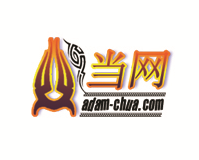http://video.msnbc.msn.com/nbcnews.com/52263723
1. What is Haze?
Haze is a result of accumulation of dust and smoke particles
in relatively dry air. Singapore is more likely to be affected by haze in the
months of May to October as a result of very dry weather conditions in the
region intensifying the effects of the fires in Indonesia and the prevailing
Southwest Monsoon winds blowing the smoke from the fires in Singapore’s
direction.
2. What are the health
effects of Haze?
Haze contains dust and smoke
particles. It also contains air pollutants such as sulphur dioxide, nitrogen
dioxide, ozone, carbon monoxide and particulate matter. Due to the small
particulate size, the particles that make up haze can go deep into the lungs,
and in some cases, enter the bloodstream.
The health effects can be
classified into local and systemic effects.
Local effects can result in eye, nose, and throat
irritation. People with history of sinus problems or sensitive nose are more
likely to develop nasal congestion, sore throat and coughing. There may be
increase incidents of skin irritations as well for those with eczema or other
skin conditions.
Picture
adapted from http://blissair.com/health-effects-of-haze.htm
Systemic effects are more
serious. These can range from respiratory conditions such asthma attacks and
bronchitis to worsening of heart diseases such as heart attacks or heart
failure.
The following groups of people
should minimise outdoor activities when the air quality is bad.
Children as they are more vulnerable due to faster breathing rates and the fact
that their lungs are still developing.
Elderly as they are more
prone to adverse health conditions because of past medical conditions.
· Patients with past medical problems such as
o
Any respiratory conditions especially
those with asthma, chronic obstructive lung diseases.
o
Any heart diseases especially those
with coronary artery disease, congestive heart failure.
o
Any history of ear, nose and throat
problems such as allergic nasal conditions or problem with sinusitis.
o Chronic
diseases such as diabetes as patients with diabetes are more prone to cardiac
conditions.
3. How is the severity of
Haze measured?
This is measured by the PSI.
PSI stands for 'Pollutant Standards Index'. It is an index developed by the
United States Environmental Protection Agency (USEPA) and is determined by the
level of air pollutants such as sulphur dioxide, nitrogen dioxide, ozone,
carbon monoxide and particulate matter called PM10 (particulate matter of 10
microns or smaller in size).
The PSI value gives an
indication of the air quality as shown: PSI Value
|
PSI Descriptor
|
0 to 50
|
Good
|
51 - 100
|
Moderate
|
101 - 200
|
Unhealthy
|
201 - 300
|
Very unhealthy
|
Above 300
|
Hazardous
|
4. What are the health advisories
pegged to PSI and PM2.5?
The following is taken from
National Environment Agency of Singapore PSI Value
|
Health Advisory
|
0 to 50
(Good)
|
None for the general
population
|
51 to 100
(Moderate)
|
None for the general
population
|
101 to 200
(Unhealthy)
|
Persons with existing heart
or respiratory ailments should reduce physical exertion and outdoor activity.
The general population should
reduce vigorous outdoor activity.
|
201 to 300
(Very unhealthy)
|
Elderly and persons with
existing heart or lung disease should stay indoors and reduce physical
exertion and outdoor activity.
The general population should
avoid vigorous outdoor activity.
|
301 to 400
(Hazardous)
|
Children, elderly and persons
with existing diseases should stay indoors and avoid outdoor activity.
The general population should
avoid unnecessary outdoor activity.
|
> 400
(Hazardous)
|
Children, elderly and persons
with existing diseases should stay indoors, keeping the windows and doors
closed and avoiding physical exertion as far as possible
Outdoor activity should be
avoided.
The general population should
keep physical exertion and outdoor activity to as low a level as possible.
|
Health advisories pegged to
PM2.5 24-hr PM2.5concentration (μg/m3)
|
Health Advisory
|
0 to 15
|
None
|
>15 to 40
|
None for the general
population.
Unusually sensitive people
should consider reducing prolonged or heavy exertion.
|
> 40 to 65
|
Following groups should
reduce prolonged or heavy outdoor exertion:
People with heart or lung
disease
Children and older adults
Everyone else should limit
prolonged or heavy exertion.
|
> 65 to 150
|
Following groups should avoid
all physical activity outdoors:
People with heart or lung
disease
Children and older adults
Everyone else should avoid
prolonged or heavy exertion.
|
5. When do we need to wear a
mask?
The general recommendation is
for healthy people to minimise outdoor activities when the PSI is greater than
100 or when the PM2.5 is greater than 40. For those who are of higher risk,
they should minimise outdoor activities when the PSI is greater than 80 or when
the PM2.5 is greater than 15.
When the 24-h PSI level exceeds
150 in the 'Unhealthy' range or when PM2.5
is greater than 40, people with existing
heart or respiratory ailments or those who are more susceptible to smoke haze
are advised to wear a respiratory mask such as N95 masks (designed to keep out
fine particulate matter) when they go outdoors. People with respiratory
diseases should consult their doctors on the use of respirator masks if they
intend to use them. N95 masks can be acquired through Raffles Medical Group.
Surgical masks and paper masks do not provide adequate
protection from the haze particles.
Regards, Adam Chua Co-Founder of Vacant Seize .COM



















0 comments:
Post a Comment